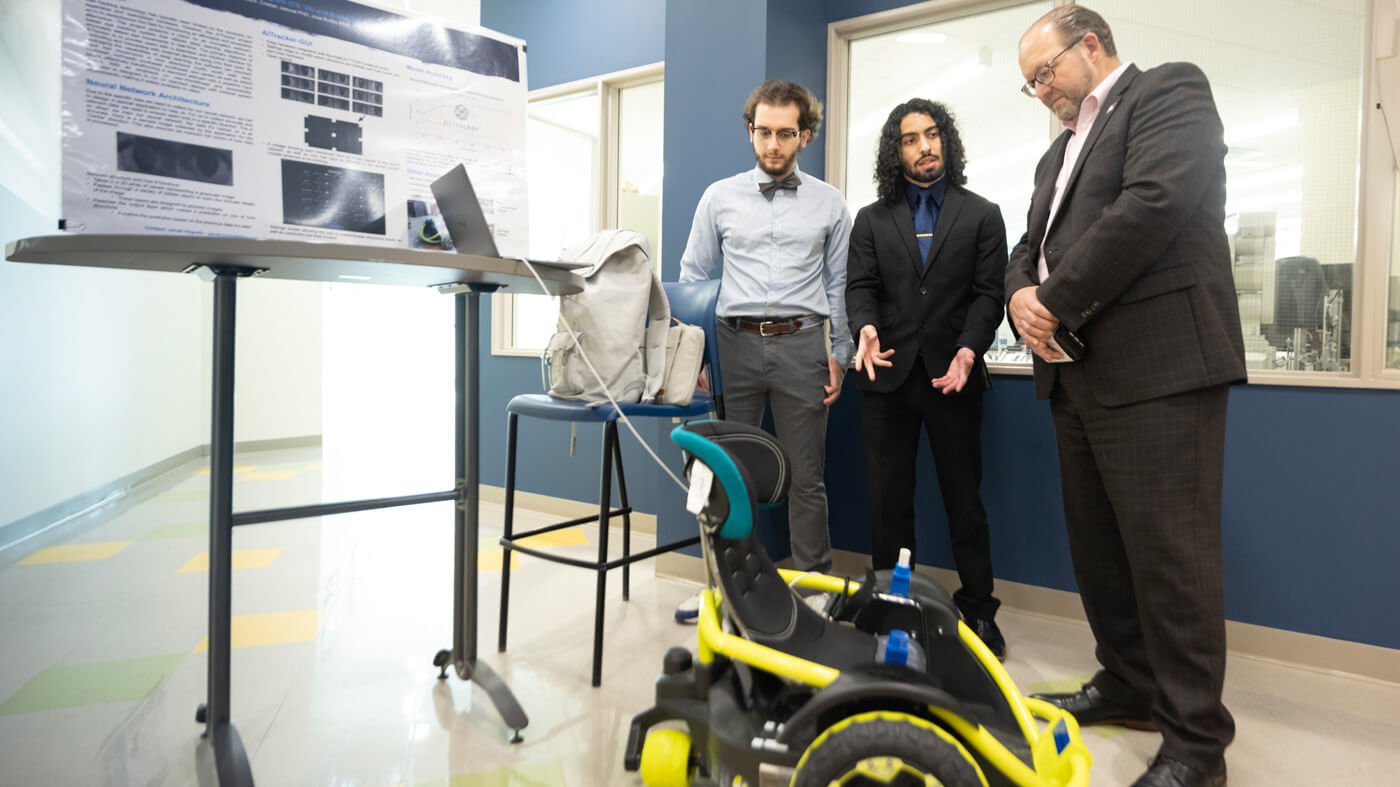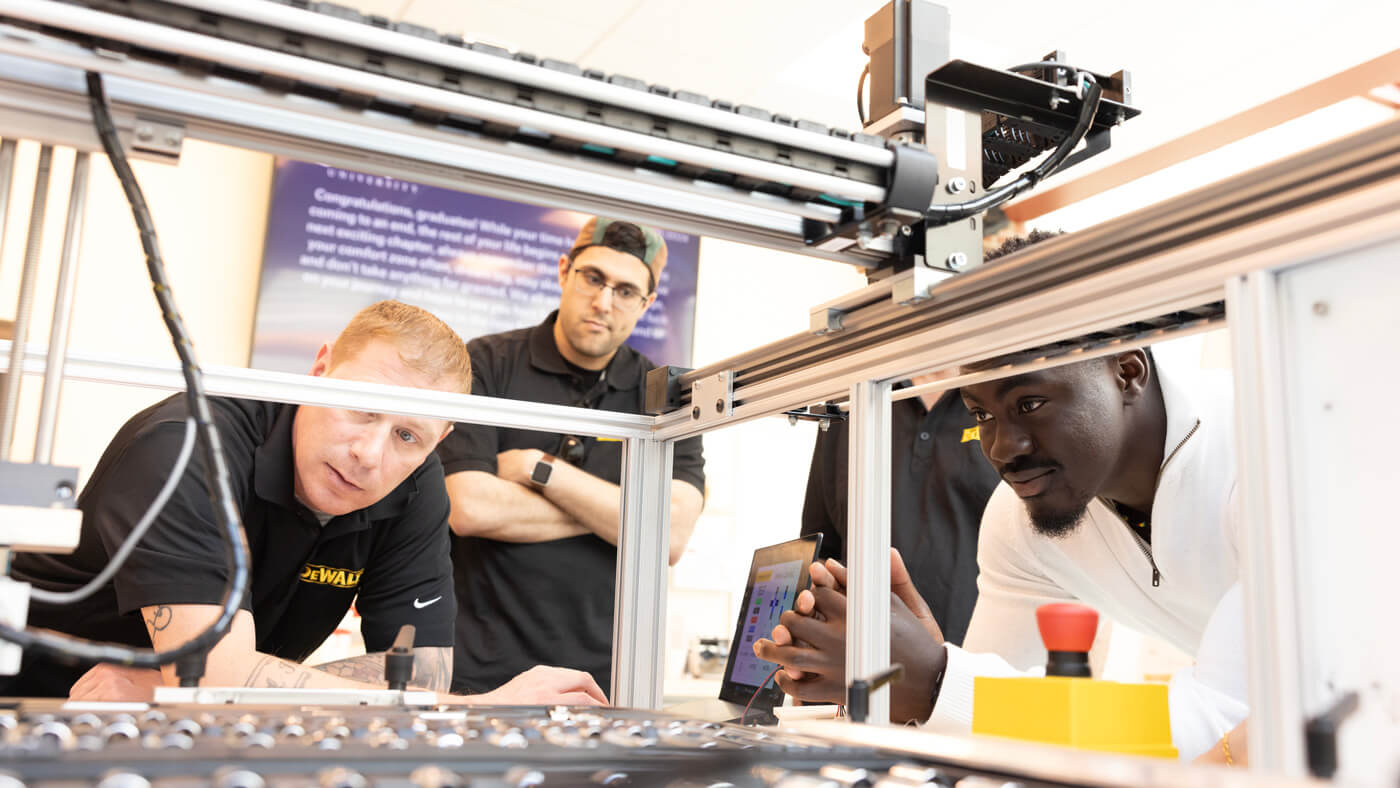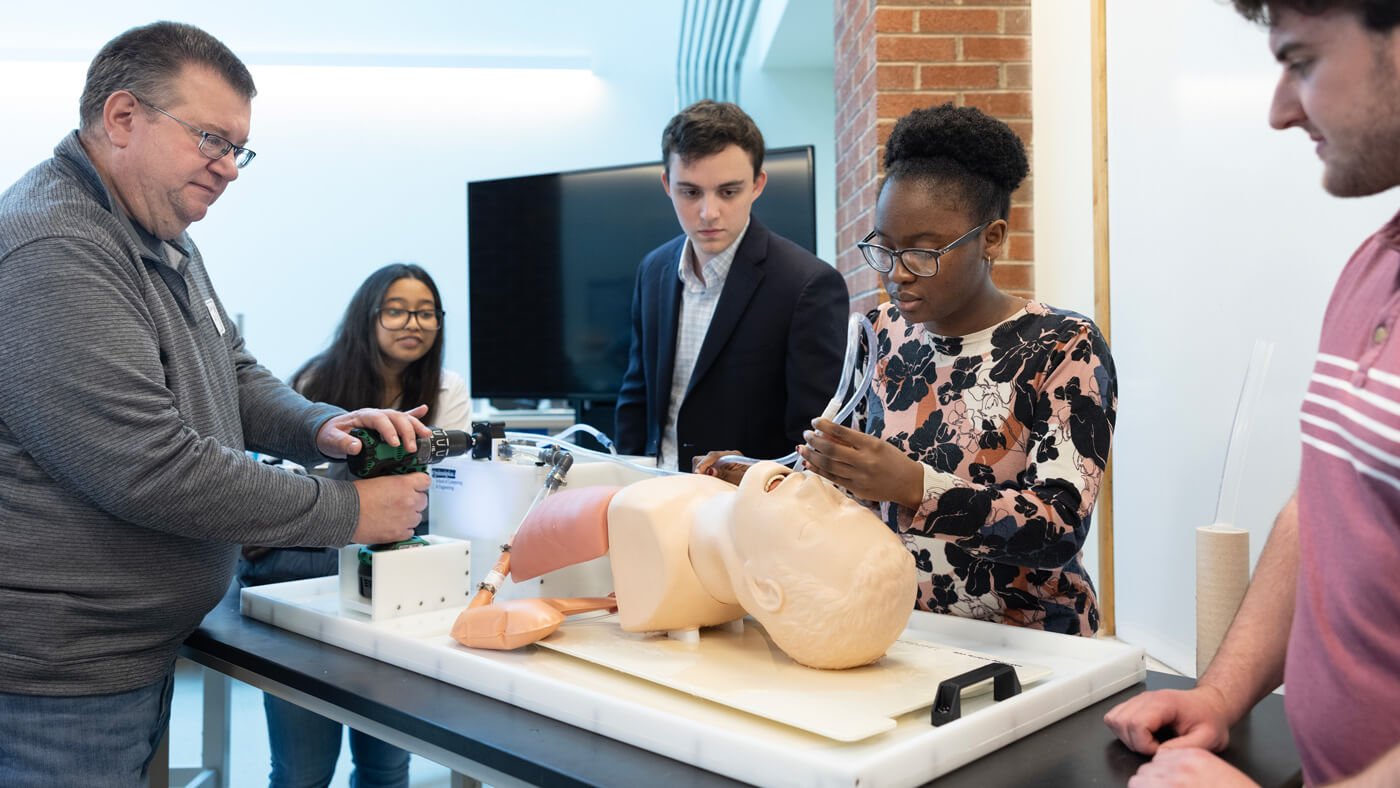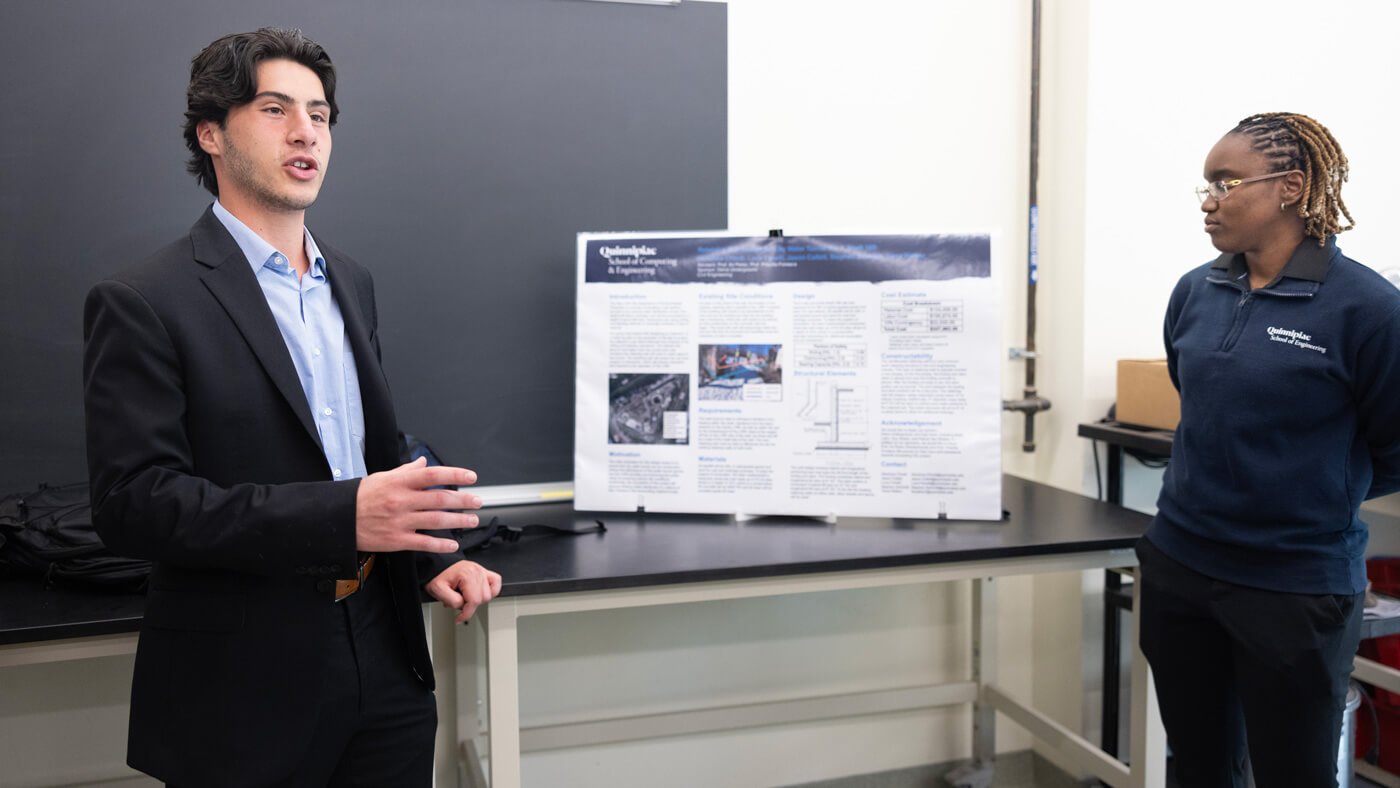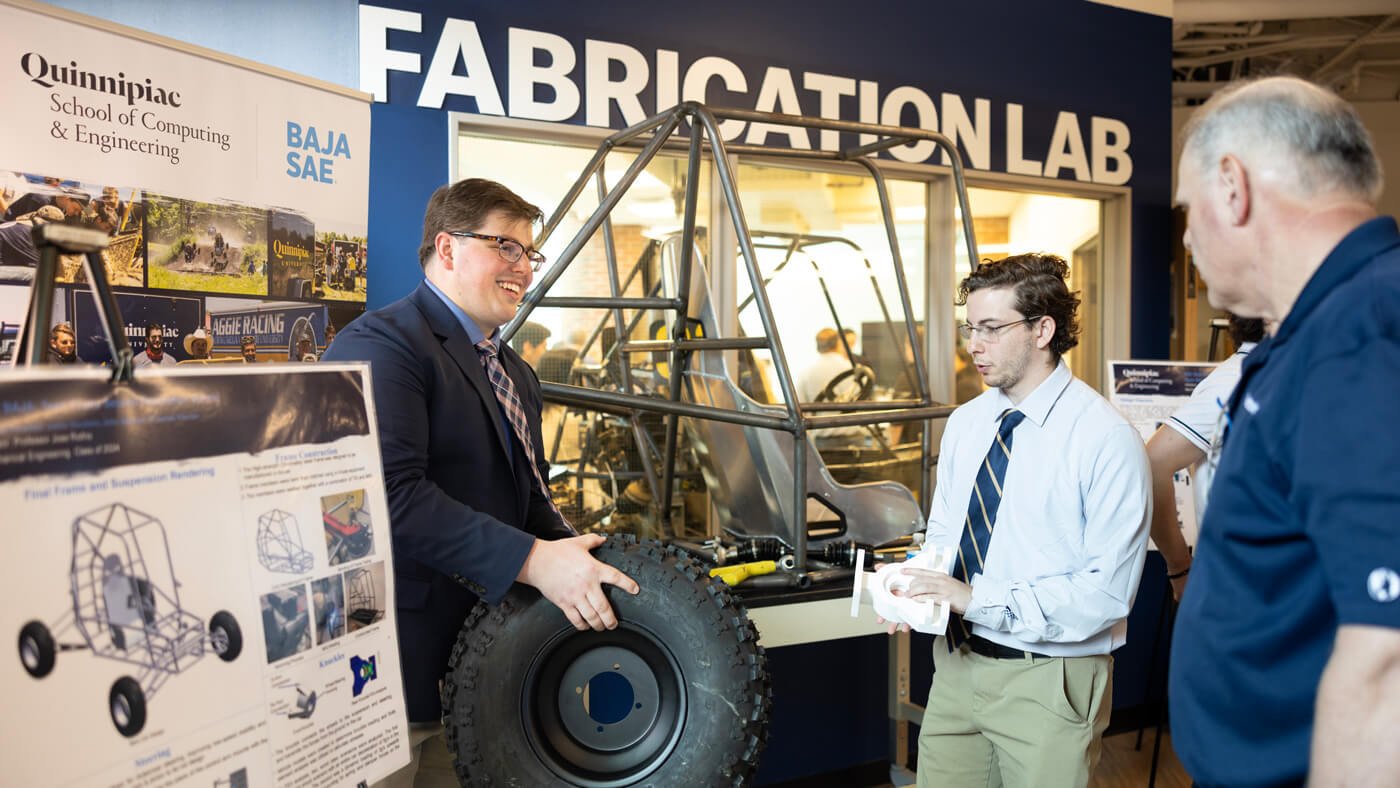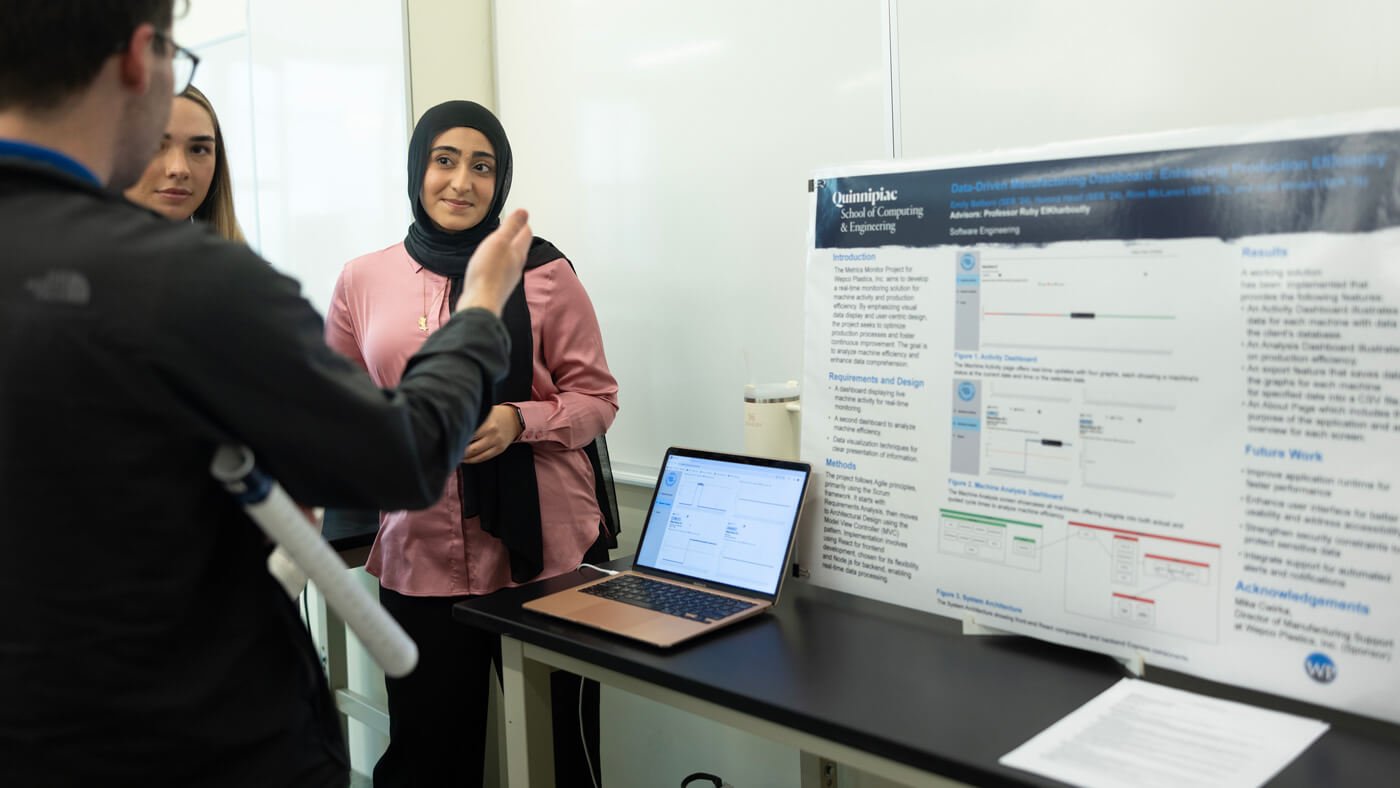Ninth Annual Projects Day
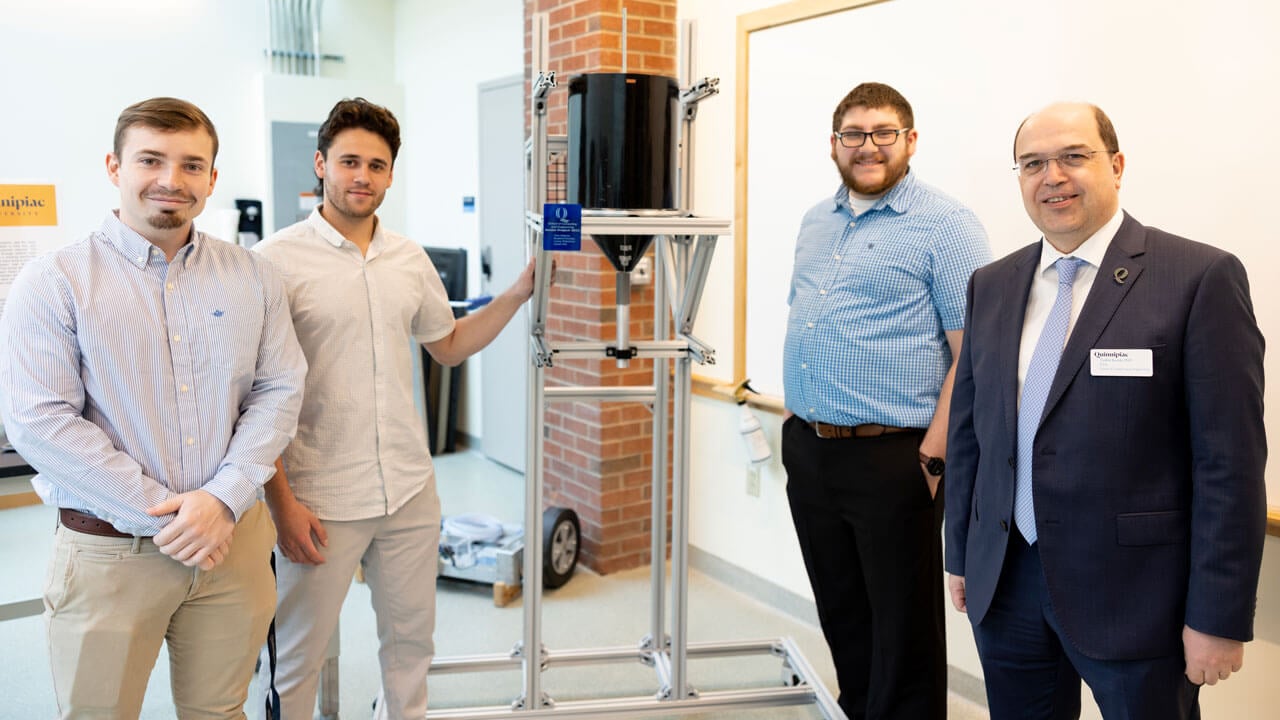
May 8, 2024
The School of Computing and Engineering extended a warm invitation to the community to join us for our milestone event, the ninth annual Projects Day. Throughout this special occasion, we celebrated our seniors as they transition from their undergraduate experience toward a new chapter as the next generation of engineers and computer science professionals.
Discover more about the innovative projects and the talented participants from each program within the School of Computing and Engineering below. We encouraged attendees to immerse themsleves in the presentations and engage in discussions with the various student teams. Your presence on this special day meant a great deal to us as we come together to celebrate the accomplishments of our students, staff and faculty.
— Taskin Kocak, dean of the School of Computing and Engineering

